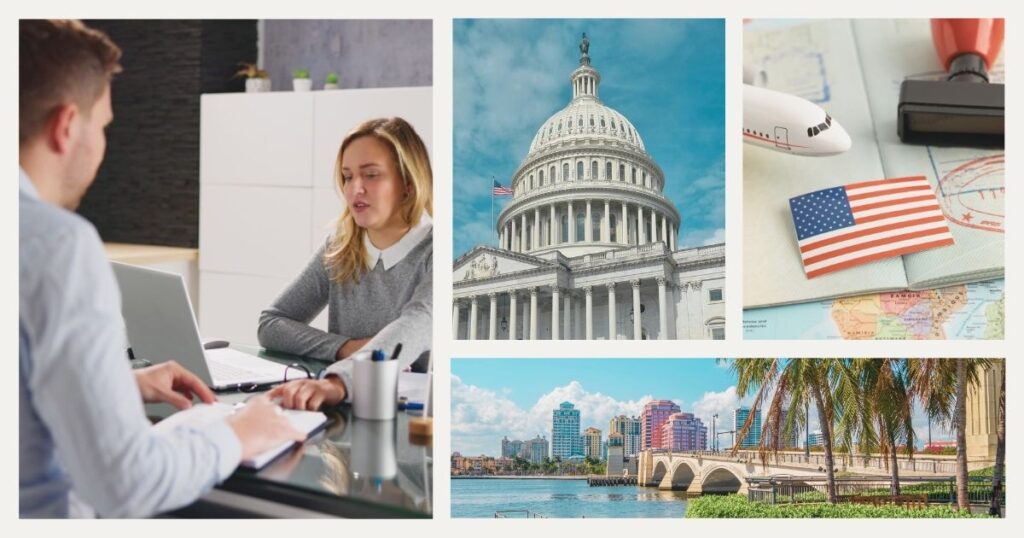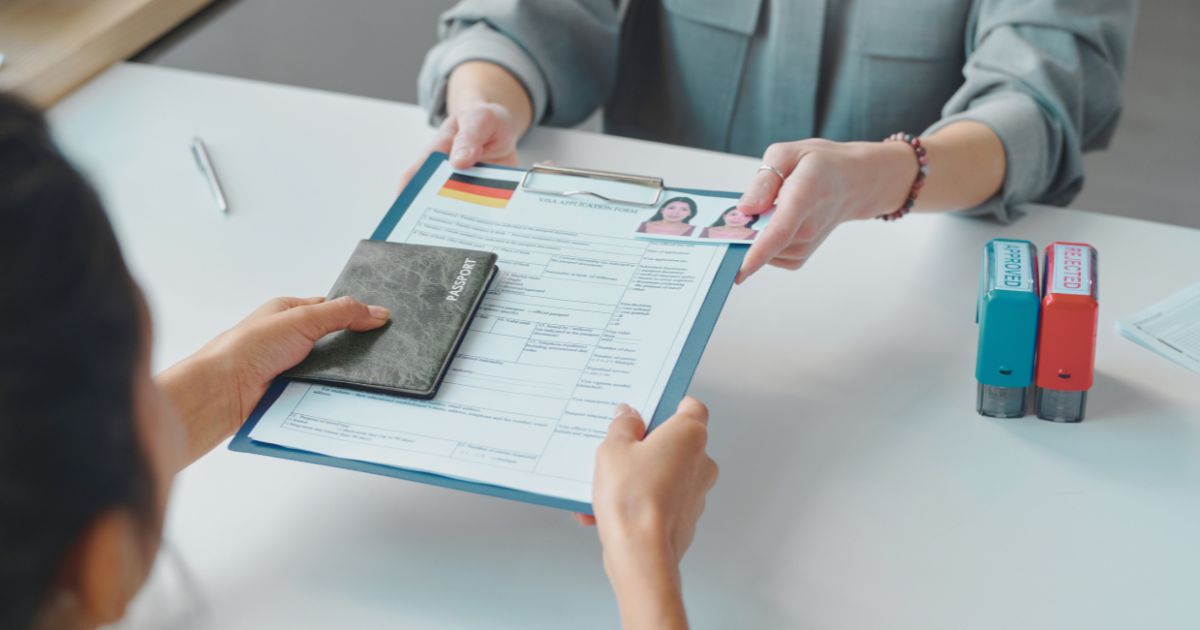Applying for a temporary work visa in the USA represents a significant opportunity for international professionals seeking to advance their careers in one of the world’s largest economies. The United States offers various temporary work visa categories designed to meet different professional circumstances, from specialized workers to seasonal employees and intracompany transferees.
Understanding the complexities of securing a temporary work visa for the USA requires comprehensive knowledge of immigration requirements, documentation procedures, and strategic planning. The American immigration system maintains strict standards, making proper preparation essential for successful applications.
This comprehensive guide examines every aspect of obtaining a temporary work visa in the USA, from identifying the appropriate visa category to navigating the application process and maintaining legal status. Whether you’re a skilled professional, seasonal worker, or entrepreneur, this resource provides the essential information needed for successful temporary work authorization in America.
Understanding USA temporary work visa categories

The temporary work visa system in the USA encompasses multiple categories, each designed for specific professional circumstances. Understanding these distinctions helps determine which temporary work visa aligns with your qualifications and career objectives.
The most common temporary work visas include H-1B for specialty occupations, L-1 for intracompany transferees, O-1 for individuals with extraordinary abilities, and TN visas for Canadian and Mexican professionals. Each category maintains distinct eligibility requirements and duration limitations.
💡 Did you know? The USA issues over 500,000 temporary work visas annually across all categories, making it one of the world’s largest temporary worker programs, though competition remains intense for popular visa types like H-1B.
H-1B specialty occupation visas
The H-1B visa represents the most sought-after temporary work visa in the USA for professionals in specialty occupations requiring specialized knowledge. Qualifying occupations typically require a bachelor’s degree or higher in specific fields, including technology, engineering, medicine, and finance.
H-1B applications operate under an annual cap of 65,000 visas, with an additional 20,000 for applicants with master’s degrees from US institutions. The lottery system creates intense competition, with recent years seeing applications exceeding available visas by 3:1 ratios.
Successful H-1B applications require US employer sponsorship, demonstrating that the position qualifies as a specialty occupation. The visa allows initial stays of up to three years, renewable for up to six years total.
L-1 intracompany transfer visas
L-1 visas facilitate temporary work authorization for employees transferring between international offices of the same company. This temporary work visa for the USA requires applicants to have worked for the qualifying organization abroad for at least one continuous year within the preceding three years.
L-1A visas serve managers and executives, while L-1B visas accommodate employees with specialized knowledge. Unlike H-1B visas, L-1 applications face no annual caps, making them attractive for multinational companies.
The L-1 visa can serve as a bridge to permanent residence. Initial L-1A visas allow stays up to seven years, while L-1B visas permit up to five years.
Essential requirements and documentation
Securing a temporary work visa in the USA demands meticulous attention to documentation requirements and eligibility criteria. Immigration authorities scrutinize applications carefully, making comprehensive preparation crucial for approval success.
All temporary work visa applications require valid passports, completed forms, and supporting documentation proving qualifications and intended employment. Specific requirements vary by visa category but include educational credentials, professional experience verification, and employer sponsorship documentation.
Educational and professional qualifications
Educational requirements for temporary work visas in the USA typically require degree verification from accredited institutions. Foreign degrees often require credential evaluation services to establish US equivalency.
Professional experience documentation includes employment letters, contracts, and evaluations demonstrating relevant background. Some visa categories accept equivalent experience in lieu of formal education, though specific formulas determine acceptable substitutions.
🌟 Pro tip: maintain reliable communication throughout your application process with Holafly’s comprehensive coverage solutions, ensuring you can respond promptly to consular requests and coordinate with employers during visa processing.
Professional licensing requirements vary by occupation and state, with some fields requiring specific certifications before beginning work. Researching these requirements early prevents delays and ensures compliance.
Employer sponsorship and labor conditions
Most temporary work visa categories in the USA require employer sponsorship, creating legal obligations for both workers and companies. Employers must demonstrate legitimate business needs for foreign workers and compliance with labor protection requirements.
Labor Condition Applications (LCAs) for H-1B visas require employers to attest to prevailing wage payments and working conditions that don’t adversely affect US workers. Employer sponsorship creates ongoing responsibilities including notification requirements for employment changes and compliance with visa conditions.
Application process and timeline
The application process for a temporary work visa in the USA involves multiple steps, strict deadlines, and coordination between employers, applicants, and government agencies. Most applications begin with employer petitions filed with US Citizenship and Immigration Services (USCIS).
USCIS petition process
Employer petitions represent the first critical step in securing temporary work authorization. USCIS reviews petitions for completeness, eligibility, and supporting documentation before rendering decisions.
Processing times vary significantly by visa category, ranging from several weeks to many months. Premium processing options expedite some petition types for additional fees, providing decisions within 15 calendar days. Petition approvals generate Form I-797 notices, which applicants need for consular processing.
Consular processing and interviews
Consular processing occurs at US embassies or consulates in applicants’ home countries, involving application submissions, fee payments, and often personal interviews. Consular officers evaluate applications against legal requirements and security considerations.
Interview preparation requires a thorough understanding of the intended employment, company background, and personal qualifications. Visa issuance enables travel to the United States, though entry remains subject to inspection by border officers.
💡 Did you know? Consular processing times can vary dramatically by country and season, with some locations experiencing delays of several months during peak application periods, making early planning essential.
Special considerations for digital nomads

The rise of remote work has created unique challenges for digital nomads seeking temporary work authorization in the USA. Traditional visa categories weren’t designed for location-independent professionals, requiring creative approaches to meet immigration requirements.
Remote work and immigration compliance
US immigration law generally requires temporary work visa holders to perform authorized employment activities within the United States. This creates complications for digital nomads accustomed to working from various international locations.
Some employers accommodate digital nomad preferences through hybrid arrangements combining US-based work with authorized international business travel. H-1B and L-1 visa holders can often work remotely within the United States, but face restrictions on extended international remote work.
Alternative pathways for location-independent workers
O-1 visas for extraordinary ability individuals offer more flexibility for some digital nomads, particularly those in creative or entrepreneurial fields. These visas focus on individual achievements rather than specific job locations.
Business visitor (B-1) status allows limited business activities but prohibits productive employment, creating gray areas for digital nomads. Treaty trader (E-1) and investor (E-2) visas provide pathways for entrepreneurs from qualifying countries, though these require substantial business investments.
Maintaining legal status and compliance
Successfully obtaining a temporary work visa in the USA represents only the beginning of ongoing compliance obligations. Maintaining legal status requires understanding and adhering to visa conditions throughout the authorized stay period.
Employment authorization and restrictions
Temporary work visas authorize employment only with sponsoring employers and for approved positions. Changing employers typically requires new petition approvals, while unauthorized employment can trigger serious immigration consequences.
Side businesses, freelance work, and investment activities may violate temporary work visa conditions unless specifically authorized. Regular monitoring of visa expiration dates prevents overstay situations that create long-term immigration problems.
Extension and status change options
Many temporary work visa categories allow extensions within the maximum authorized periods. Extension applications require continued employer sponsorship and demonstration of ongoing qualifying employment.
Status changes between temporary visa categories sometimes occur without leaving the United States. Permanent residence applications can proceed while maintaining temporary status in most categories, providing pathways to long-term US residence.
Common challenges and solutions

Applying for a temporary work visa in the USA presents numerous challenges requiring strategic solutions and professional guidance. Understanding common obstacles helps applicants prepare effectively and increase approval chances.
Documentation requirements, processing delays, and complex legal standards create frequent complications for temporary work visa applications. Successful applicants often invest significant time and resources in professional assistance and thorough preparation.
Documentation and evidence challenges
Gathering comprehensive supporting documentation challenges many applicants, particularly those with international educational backgrounds or unconventional career paths. Professional credential evaluation services help establish US equivalencies for foreign qualifications.
Translation requirements for foreign-language documents add time and expense to application preparation. Certified translations ensure immigration authorities can properly evaluate submitted evidence while maintaining legal compliance standards.
Employer documentation requirements, including tax records, business licenses, and organizational charts, require extensive preparation and coordination. Early planning prevents last-minute rushes that can compromise application quality.
Processing delays and administrative issues
USCIS processing times fluctuate based on workload, policy changes, and administrative priorities. Monitoring processing time updates and filing strategies helps optimize application timing for better outcomes.
Requests for additional evidence (RFEs) frequently delay application processing while requiring comprehensive responses to USCIS concerns. Professional legal assistance often proves valuable for complex RFE responses that address underlying issues.
Administrative errors by government agencies or applicants can significantly delay processing or result in denials. Careful review of all submissions and prompt correction of identified errors minimizes these complications.
🌟 Pro tip: keep detailed records of all application materials, correspondence, and deadlines throughout the process, as these documents become crucial for extensions, appeals, or future applications.
Securing a temporary work visa in the USA requires careful planning, comprehensive documentation, and strategic navigation of complex immigration requirements. Success depends on matching qualifications with appropriate visa categories, meeting employer sponsorship requirements, and maintaining compliance throughout the authorized stay period.
For expert guidance on visa applications and international career planning, including comprehensive resources about working in the USA as a digital nomad, Nomada provides specialized support for location-independent professionals pursuing global opportunities.
Ready to pursue your American career opportunity? Start planning your temporary work visa application with confidence and professional guidance! 🇺🇸
Frequently asked questions about USA temporary work visas
Processing times vary significantly by visa type and current USCIS workloads. H-1B petitions typically take 2-6 months, while L-1 applications may be processed in 1-4 months. Premium processing options reduce some petition times to 15 days for additional fees. Consular processing adds another 2-8 weeks, depending on the embassy location and interview availability.
Yes, you can have multiple pending petitions for different visa categories, though each application requires separate employer sponsorship and filing fees. However, you can only maintain one legal status at a time, so approval of multiple petitions requires choosing which status to activate and maintain.
Denials can often be appealed or reconsidered if based on correctable issues. Some visa categories allow refiling with additional evidence, while others may require waiting periods. Consulting with immigration attorneys helps determine the best response strategy based on specific denial reasons and circumstances.
Most temporary work visa categories allow spouses and unmarried children under 21 to accompany the primary visa holder in derivative status. Spouses of H-1B, L-1, and O-1 visa holders can typically apply for employment authorization, while dependent children cannot work until reaching the appropriate age and status.
Many temporary work visa holders successfully transition to permanent residence through employer sponsorship or other qualifying pathways. However, some temporary visas require demonstrating non-immigrant intent, creating complexity for permanent residence applications. Professional legal guidance helps navigate these transitions while maintaining legal status.



